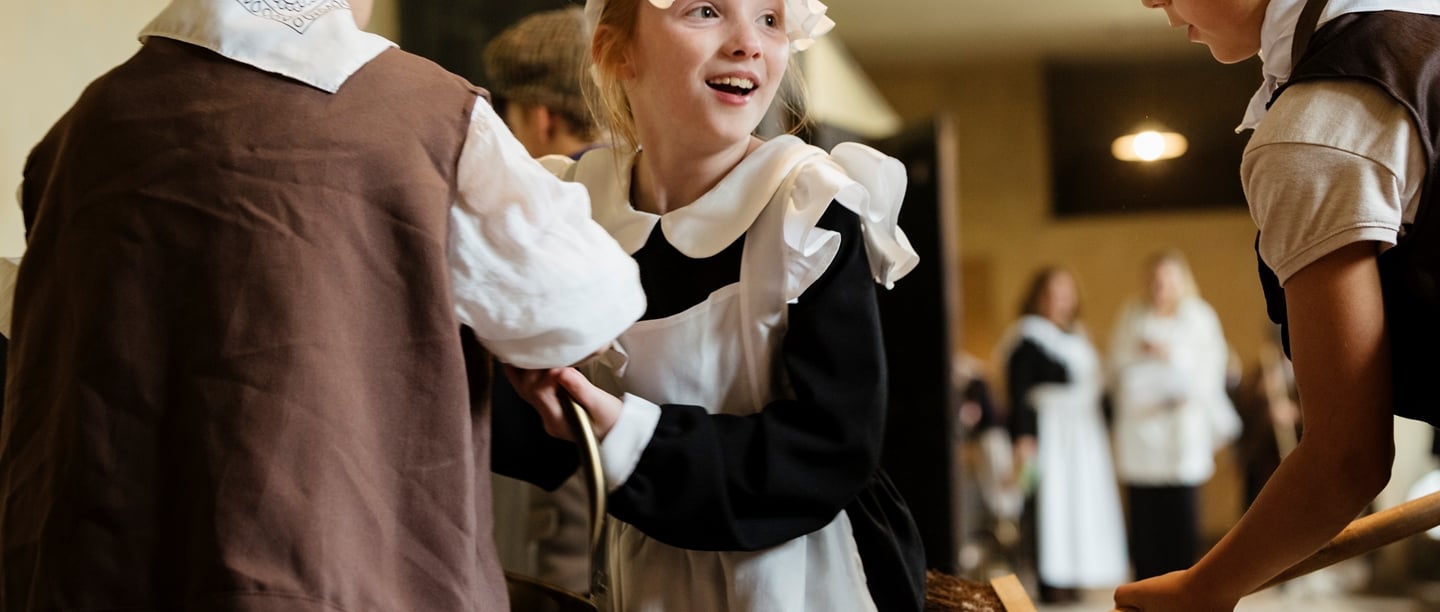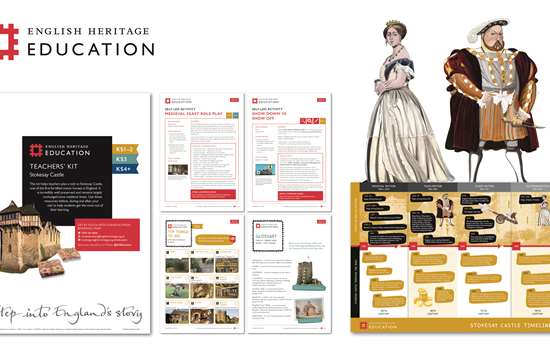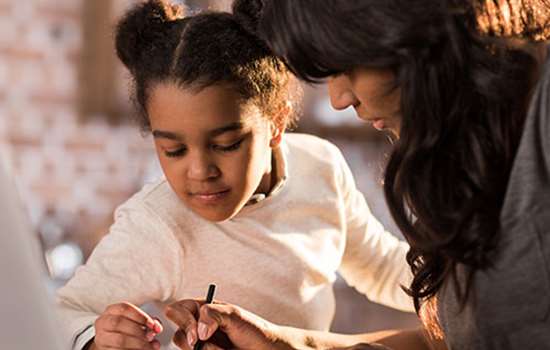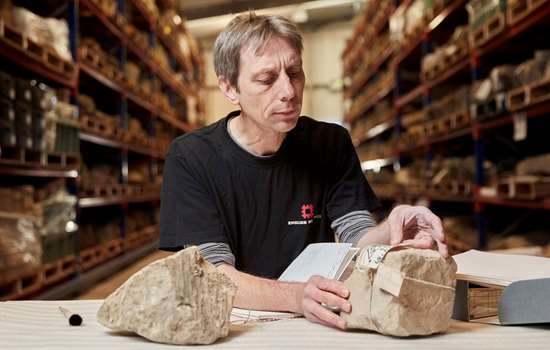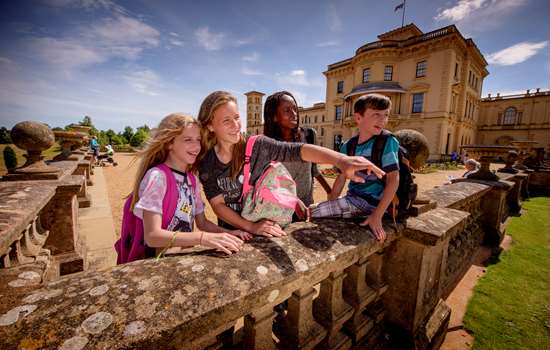Hints and Tips
- Entry to Empire – Queen Victoria can prove a useful entry point for studying the British Empire – how it grew and evolved during her reign, including early indicators of movements towards self-government and independence.
- Diversity of experience – Remember to explore the experiences of all classes in Victorian society. Site-based study can really help with this and provide tangible characters for learners to shape their developing knowledge and understanding around.
- Grandmother of Europe – Queen Victoria’s children married European royalty and played key roles in European affairs. These marriages can provide an interesting stimulus to exploring events in the later Victorian period, and beyond, into the 20th century.
Suggested Reading and Activities
-
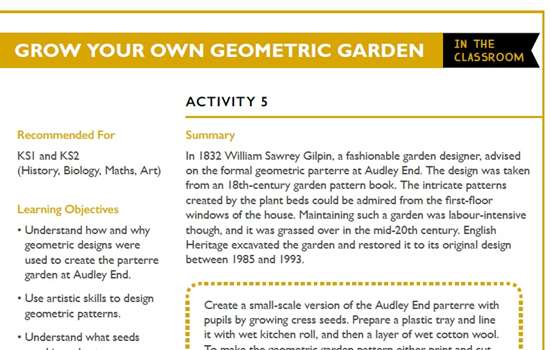
Grow Your Own Geometric Garden (KS1-KS2) - Audley End Teachers' Activity Ideas
Take inspiration from the parterre garden at Audley End and grow your own geometric garden at home or in the classroom.
-
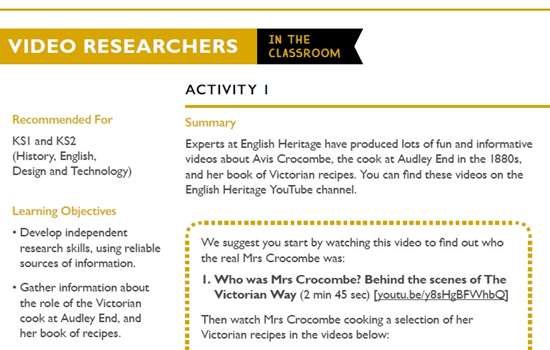
Video Researchers (KS1-KS2) - Audley End Teachers' Activity Ideas
Delve into the Victorian period by using our range of Victorian video resources to research what life was like upstairs and downstairs.
-
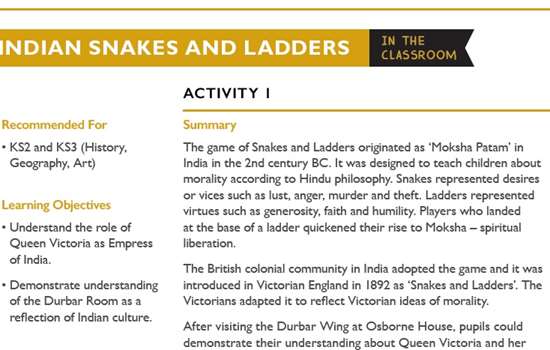
Indian Snakes and Ladders (KS2-KS3) - Osborne Durbar Wing Teachers' Activity Ideas
Find out more about the link between the popular game of Snakes and Ladders, Queen Victoria and India by making and playing your own version of the game.
-
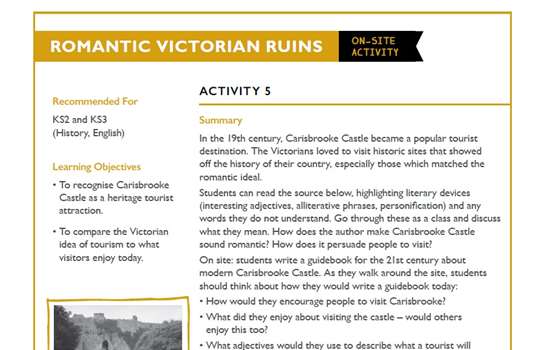
Romantic Victorian Ruins (KS2-KS3) - Carisbrooke Castle Teachers' Activity Ideas
By the Victorian period, many medieval buildings had fallen into ruin and attracted tourists. Use this activity to consider how we use language to create an impression of place and atmosphere.
-
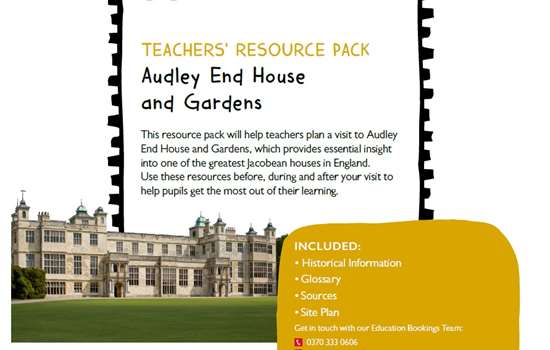
Audley End House and Gardens Teachers' Resource Pack (KS1-KS2)
Find out more about the Victorian history of Audley End House and use sources gathered by our experts to deepen your understanding.
-
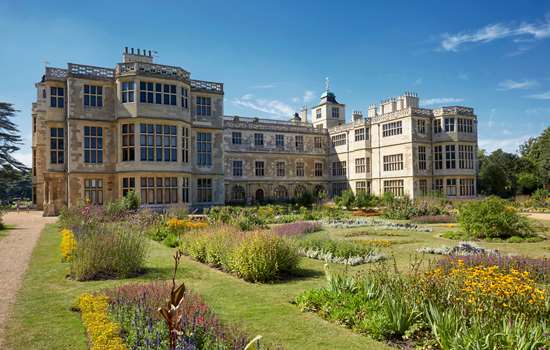
Below Stairs at Audley End
What was life like for servants at a house like Audley End? Discover more about the roles and duties of Victorian country house servants in our extended article packed with contemporary sources.
-
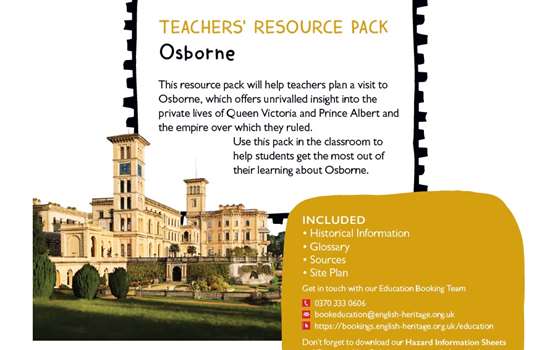
Osborne Teachers' Resource Pack (KS2-KS3)
Find out more about Queen Victoria's seaside retreat and investigate sources gathered by our experts to deepen your understanding of royal family life during the Victorian period.
-
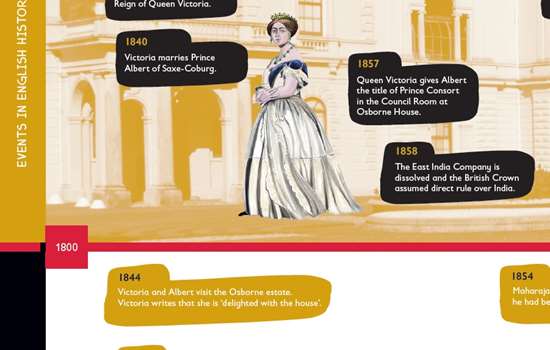
Osborne Timeline (KS2-KS3)
Use our Osborne timeline to chart how the house developed during Queen Victoria's reign and what was happening elsewhere in Britain during the same period.
History at Home Live! Charles Darwin and Down House
Watch History at Home Live! with Ben Shires and our expert Antony O'Rourke to uncover the story of Charles Darwin and his life at Down House.
Where did Darwin get his idea of Natural Selection from? How did his theory of evolution develop? What experiments and observations took place in the gardens of Down House? Find out the answers to these questions and more.
Get to Grips with the Period
Britain was at the height of its international power and status during Queen Victoria’s reign (1837–1901). It was the greatest manufacturing and trading nation in the world and led the way in developing new technologies.
The Victorian period was a time of immense industrial and social change as well as scientific discovery. Sites like Stott Park Bobbin Mill and J.W. Evans Silver Factory show England as a hive of industry, while English Heritage’s collection of windmills which show how rural life was transformed by machinery. Charles Darwin wrote his famous work On the Origin of Species at his home at Down House where he experimented with and observed natural phenomena for 40 years.
Such industry generated wealth and architectural developments and this is reflected in the country houses built at this time. Queen Victoria's seaside retreat at Osborne showcases an Italianate style that was exported throughout the British Empire.
Despite a French invasion scare in the 1860s, which produced new fortifications such as Fort Brockhurst and the updating of older defences at Dartmouth Castle, Britain’s fleets continued to rule the seas and its armies continued to fight in far-flung wars. Although there was resistance to British rule, the Victorian empire was continuing to expand at the Queen’s death in 1901.
Read our Introduction to Victorian England-
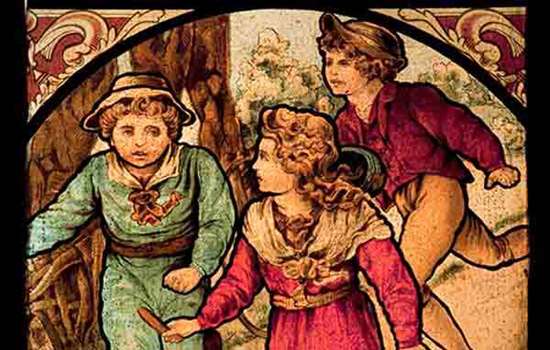
Victorian Daily Life
Although the Victorian era was a period of extreme social inequality, industrialisation brought about rapid changes in everyday life.
-
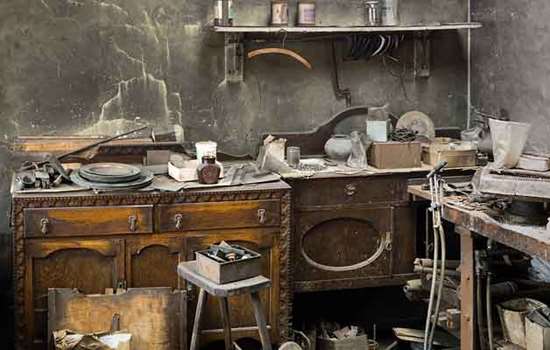
Victorian Commerce
Overseas trade and an extensive commercial infrastructure made Britain in the 19th century the most powerful trading nation in the world.
-
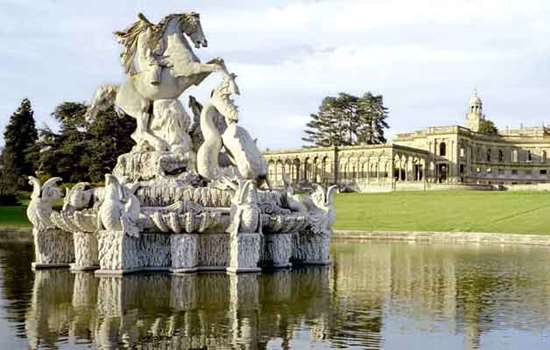
Victorians: Architecture
The architectural profession is largely a Victorian creation. From the 1820s, architects began to experiment with a profusion of styles.
-
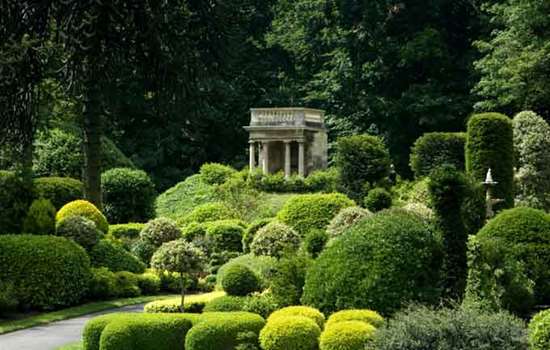
Victorian Parks and Gardens
An extraordinary number of innovations in the study and cultivation of plants were made during the Victorian period. Meanwhile, gardening became a national obsession.
Victorians Glossary
Expert Advice
We asked one of our historians for their thoughts on teaching the Victorians:
Read more about Teaching HistoryThe Victorian period was one of great change in England when many of the aspects of life we take for granted today first appeared. Think of electricity, the telephone, the motor car, compulsory primary education, the post office and modern police service to name but a few.
It’s the first period when we can glimpse into the lives of many ordinary people through sources like the census, local newspapers and photography. It’s also a period clearly visible in our townscapes and rural landscapes today: in the factories, workers’ housing, railway lines, public buildings, farmhouses and field boundaries.
By 1901, the British Empire stretched across the globe, covering almost a quarter of the Earth’s people and land area. The country was wealthier than it had ever been, its people more numerous, more urbanised, and better educated. Society, economy and political life had been transformed in the 63 years and seven months since Queen Victoria came to the throne.
Dr Andrew Hann, Senior Historian
Video Resources
Delve into the Victorian period with our variety of themed videos.
Meet Victorian cook, Avis Crocombe, at Audley End and take a tour of the laundry with housekeeper, Mrs Warwick. Find out about Charles Darwin and his daring discoveries. Learn how to make breakfast the Victorian way and explore the far-reaching effects of the Industrial Revolution.
-
Who Was Charles Darwin?
-
A Tour of the Laundry - the Victorian way
-
What was the Industrial Revolution?
-
How to Make Breakfast the Victorian Way
Curators' Collections: Osborne
Explore objects from the collection at Osborne to learn more about Queen Victoria's family life at her seaside retreat, change and development in Victorian Britain, and the story of the British Empire.
Hear from one of our experts about how these objects can act as sources, offering us a window on the past, and discover a curator's role in making this happen.
Use objects from Osborne at home or in the classroom to inspire cross-curricular learning and further your research.
Read More